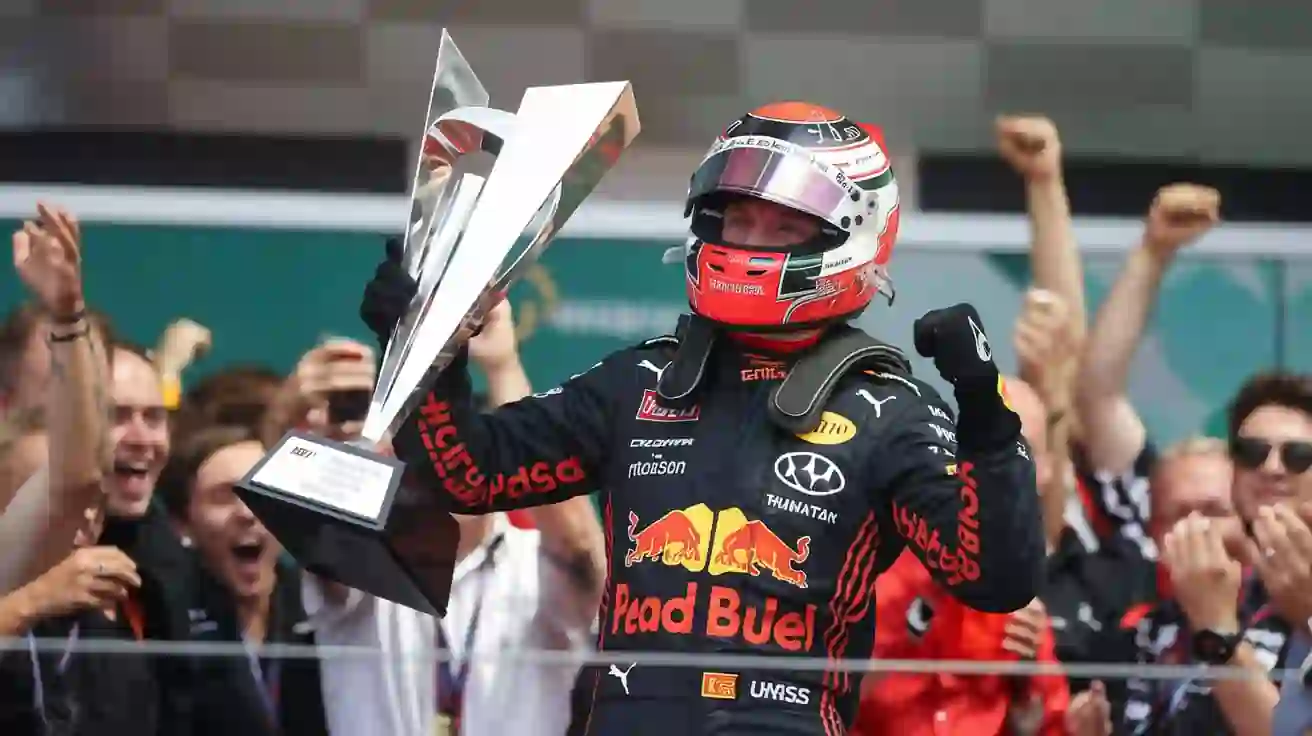
Max Verstappen stands on the brink of a fourth Formula 1 World Championship, embodying the philosophy of “racing to the limit.” With his unwavering consistency, strategic brilliance, and fearless driving style, Verstappen’s journey this season has been marked by dominance, controversy, and resilience. Under the lights of Las Vegas, he looks to secure his legacy once again. 🌟🏎️
Advertisement


Table of Contents
Introduction
Max Verstappen, the two-time Formula 1 world champion, stands on the brink of his fourth championship as the 2023 season nears its conclusion. His philosophy, encapsulated by his belief that “to win, you need to be on the limit,” has defined his racing style, consistency, and relentless pursuit of excellence. This year has seen Verstappen navigate a turbulent season filled with triumphs, controversies, and challenges—on and off the track.
The Philosophy of Racing to the Limit
A Driver’s Mindset
Max Verstappen’s approach to Formula 1 revolves around precision, risk management, and an unyielding commitment to perfection. He emphasizes the importance of consistency, saying:
“I hate making mistakes. If you want to win a championship, you cannot afford bad results.”
This mentality has enabled Verstappen to dominate the 2023 season, even as his team faced significant challenges mid-year.
Highlights of the 2023 Season
Early Season Dominance
The season began with Red Bull Racing in top form. Verstappen secured several commanding victories, building a strong championship lead.
Mid-Season Challenges
| Key Moments | Details |
|---|---|
| Car Development Struggles | Red Bull’s upgrades made the car harder to drive, leading to performance dips mid-season. |
| McLaren’s Surge | Lando Norris and McLaren closed the gap, putting Verstappen under pressure. |
| Comeback in Brazil | Verstappen delivered a stunning victory from 17th on the grid, showcasing his resilience. |
Controversy Over Defensive Tactics
Austin Incident
In the United States Grand Prix, Verstappen’s aggressive defense against Norris sparked debate among drivers and the FIA. His tactic—holding the inside line and forcing rivals off-track—drew criticism.
FIA Rule Changes
Following discussions in Mexico, the FIA revised rules to address such maneuvers. Verstappen, however, remained unfazed, stating:
“If the rules are written like that, I will use the rules.”
Off-Track Challenges and Team Dynamics
Tensions Between Jos Verstappen and Christian Horner
- Allegations against Red Bull’s team principal, Christian Horner, created tensions between Verstappen’s father and the team.
- Verstappen played the role of mediator, emphasizing communication over media disputes.
Impact of Departures
Key figures, including design leader Adrian Newey, left Red Bull, contributing to mid-season struggles. Verstappen acknowledged the challenges but focused on adapting to the evolving dynamics.
Expectator’s Reactions and Ratings
Fan Opinions
💬 “Max Verstappen is redefining dominance in F1.” — @RacingFan2023
💬 “His defensive driving may be controversial, but it’s pure racing instinct.” — @F1Lover
💬 “A generational talent who keeps pushing the boundaries.” — @TracksideObserver
Ratings for Verstappen’s 2023 Season
| Category | Rating (Out of 5) | Comments |
|---|---|---|
| Consistency | ⭐⭐⭐⭐⭐ | Maintained top performance despite car issues. |
| Aggressiveness | ⭐⭐⭐⭐ | Controversial yet effective on-track tactics. |
| Adaptability | ⭐⭐⭐⭐⭐ | Overcame team dynamics and technical challenges. |
Max Verstappen’s Future in Formula 1
Breaking Records vs. Enjoying Life
With 62 wins and multiple titles, Verstappen could potentially break all F1 records. Yet, he remains indifferent:
“It’s not my desire. I just want to have a good time. I definitely don’t want to be racing in F1 until I’m 40 years old.”
Priorities Beyond Racing
Verstappen’s focus is on enjoying life and maintaining balance, contrasting with the relentless drive for accolades seen in other F1 legends.
FAQs
1. What defines Max Verstappen’s racing style?
Verstappen is known for his aggressive tactics, consistency, and precision, always pushing the limits within the rules.
2. How did Red Bull’s struggles affect Verstappen’s season?
Despite mid-season car development challenges, Verstappen maintained top results, showcasing adaptability and resilience.
3. Why was Verstappen’s defensive driving criticized?
His tactic of forcing rivals off-track during overtakes led to FIA rule changes, though Verstappen defended his approach as within the rules.
4. What is Verstappen’s view on breaking F1 records?
He is indifferent to breaking records, prioritizing enjoyment and balance in his career.
5. How has Verstappen handled off-track challenges?
By focusing on performance and mediating disputes, he maintained professionalism amid team tensions.
References
- BBC Sport. “Max Verstappen on Racing to the Limit.” Published November 17, 2023.
- FIA Official Regulations. “Updated Defensive Driving Guidelines for Formula 1 Drivers.”
- Red Bull Racing. “Season Review 2023: Challenges and Triumphs.”
- Formula 1 Official Website. “Driver Standings and Insights: 2023 Season.”
- Autosport. “Verstappen’s Victory from 17th: A Masterclass in Brazil.”
Disclaimer
This article is based on publicly available information and interviews with Max Verstappen. The opinions expressed reflect the context of the 2023 Formula 1 season.
Conclusion
Max Verstappen’s 2023 season is a testament to his resilience, adaptability, and unmatched consistency. Whether navigating controversies, overcoming team dynamics, or delivering stunning performances on track, Verstappen continues to redefine what it means to be a champion. With a fourth title within reach, his legacy as one of Formula 1’s greatest drivers is already cemented.
About the Author
จอชเป็นนักรีวิวคาสิโนออนไลน์ที่มีประสบการณ์มากกว่า 10 ปีในอุตสาหกรรมเกมออนไลน์ เขามีความเชี่ยวชาญในแพลตฟอร์มการเล่นเกม มาตรการรักษาความปลอดภัย และนโยบายการเล่นที่ยุติธรรม นอกเหนือจากการรีวิวเกมแล้ว จอชยังเป็นนักข่าวที่ครอบคลุมหัวข้อต่าง ๆ อย่างเชี่ยวชาญ ไม่ว่าจะเป็นไลฟ์สไตล์ สุขภาพ การท่องเที่ยว ธุรกิจ บันเทิง อาหาร และกฎหมาย ด้วยบทวิจารณ์ที่รอบคอบและเป็นกลาง เขามีส่วนร่วมในสิ่งพิมพ์หลายแห่ง โดยเนื้อหาของเขามีการค้นคว้าอย่างละเอียดและครอบคลุม ทำให้ผลงานของเขาโดดเด่นทั้งในอุตสาหกรรมเกมและด้านอื่น ๆ


